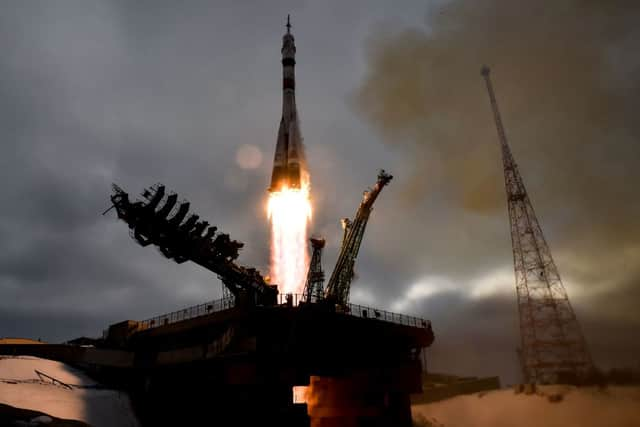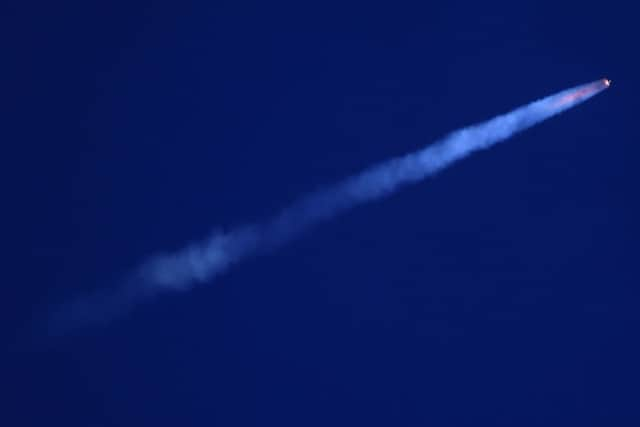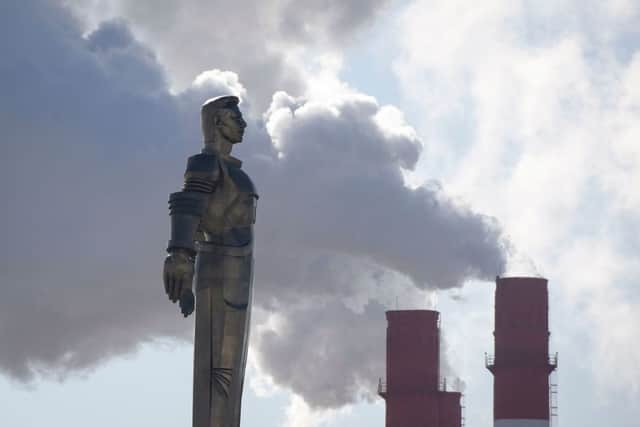Russian rocket launch: why did out of control 20-ton spacecraft hurtle back to Earth - and where did it crash?
and live on Freeview channel 276
When a massive asteroid narrowly missed the earth in December, it underlined the natural dangers posed by space.
Plans for how to deflect space rocks are still in their infancy, with US space agency Nasa having only recently launched humanity’s first attempt at knocking an asteroid off course.
Advertisement
Hide AdAdvertisement
Hide AdBut while asteroids are an understandable space hazard, we don’t expect man-made objects to threaten life on earth.
And yet, that is what happened late on Wednesday (5 January), when an out of control Russian rocket plummeted back into the atmosphere.
So why did this spacecraft fall back to earth - and where did it crash?
Here’s what you need to know.


Why did the Russian rocket launch go wrong?
On 27 December 2021, Russia launched a rocket it is developing from the Plesetsk Cosmodrome around 800km north of the country’s capital, Moscow.
Advertisement
Hide AdAdvertisement
Hide AdThe heavy-lifting Angara launch vehicle has been in development since 1992 and has been designed to replace a number of Russia’s existing space rockets.
Its most recent launch was meant to be a third and final demonstration flight for its A5 variant, with the rocket carrying a 2,400kg fake satellite that was intended to be deployed at a high, stable orbit before being blasted out further into space.


While the initial phases of the launch were successful, the rocket’s upper section - Persei - suffered an engine failure and the spacecraft was unable to go higher than a low-earth orbit.
It led to the mission being abandoned.
However, the 20-ton spacecraft soon began falling back to earth - although one Russian space expert wrote that the rocket was likely to weigh 3.5-tons by the time it re-entered the atmosphere as much of its fuel would have been drained.
Where did the rocket crash?
Advertisement
Hide AdAdvertisement
Hide AdExperts struggled to predict when and where the rocket would crash land due to its uncontrolled descent.
Locations as diverse as the Indian Ocean, Southern Ocean, Pacific, Mexico and Texas were mooted by astronomer Jonathan McDowell from the US Centre for Astrophysics.


While these latter two locations presented the possibility debris from the rocket could hit an urban area, Mr McDowell said on Twitter on Tuesday (4 January) that any falling pieces would only be likely to make a dent in someone’s roof rather than cause any major damage.
At around 9pm GMT on Wednesday (5 January), it was confirmed the rocket had crashed into an empty patch of the south of the Pacific ocean, well east of the island of French Polynesia.
Is this kind of crash common?
Advertisement
Hide AdAdvertisement
Hide AdThe world’s various space agencies tend to try to crash large old satellites and even former space stations from low-earth orbits into this part of the Pacific Ocean because of its distance from human civilisation.
However, they usually do so in a controlled manner by burning up these spacecrafts’ fuel reserves to slow their rate of descent.
Smaller craft tend to burn up in the atmosphere, while those spacecraft in higher orbits tend to be pushed out to what is called a ‘graveyard orbit’ some 200 miles above where the farthest human satellites operate.
Uncontrolled re-entries by spacecraft have happened in the past.
Advertisement
Hide AdAdvertisement
Hide AdIn May 2021, China sparked anger worldwide when an out of control 23-ton section of its Long March 5B rocket tumbled back to earth after having put a major part of the country’s first space station into orbit.
A message from the editor:
Thank you for reading. NationalWorld is a new national news brand, produced by a team of journalists, editors, video producers and designers who live and work across the UK. Find out more about who’s who in the team, and our editorial values. We want to start a community among our readers, so please follow us on Facebook, Twitter and Instagram, and keep the conversation going. You can also sign up to our email newsletters and get a curated selection of our best reads to your inbox every day.
Comment Guidelines
National World encourages reader discussion on our stories. User feedback, insights and back-and-forth exchanges add a rich layer of context to reporting. Please review our Community Guidelines before commenting.
